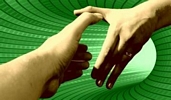|
|
 Acne (1,500) Acne (1,500)
 Addictions (1,500) Addictions (1,500)
 Advice (1,500) Advice (1,500)
 Allergies (1,092) Allergies (1,092)
 Alternative Medicine (1,500) Alternative Medicine (1,500)
 Anti Aging (1,500) Anti Aging (1,500)
 Breakup (1,500) Breakup (1,500)
 Cancer (1,499) Cancer (1,499)
 Dental Care (1,500) Dental Care (1,500)
 Disabilities (1,500) Disabilities (1,500)
 Divorce (1,500) Divorce (1,500)
 Elderly Care (1,498) Elderly Care (1,498)
 Goal Setting (1,500) Goal Setting (1,500)
 Hair Loss (1,500) Hair Loss (1,500)
 Health and Safety (1,497) Health and Safety (1,497)
 Hearing (1,500) Hearing (1,500)
 Law of Attraction (1,499) Law of Attraction (1,499)
 Marriage (1,500) Marriage (1,500)
 Medicine (1,497) Medicine (1,497)
 Meditation (1,499) Meditation (1,499)
 Men's Health (1,500) Men's Health (1,500)
 Mental Health (1,500) Mental Health (1,500)
 Motivational (1,500) Motivational (1,500)
 Nutrition (1,495) Nutrition (1,495)
 Personal Injury (1,499) Personal Injury (1,499)
 Plastic Surgeries (1,500) Plastic Surgeries (1,500)
 Pregnancy (1,496) Pregnancy (1,496)
 Psychology (1,500) Psychology (1,500)
 Public Speaking (1,500) Public Speaking (1,500)
 Quit Smoking (1,500) Quit Smoking (1,500)
 Religion (1,499) Religion (1,499)
 Self Help (1,500) Self Help (1,500)
 Skin Care (1,500) Skin Care (1,500)
 Sleep (1,500) Sleep (1,500)
 Stress Management (1,500) Stress Management (1,500)
 Teenagers (1,492) Teenagers (1,492)
 Time Management (1,500) Time Management (1,500)
 Weddings (1,500) Weddings (1,500)
 Wellness (1,500) Wellness (1,500)
 Women's Health (1,500) Women's Health (1,500)
 Women's Issues (1,500) Women's Issues (1,500)
|
Anxiety Disorders are diagnosed when people consistently feel fear and experience abnormal sympathetic nervous system arousal (aka the fight-or-flight reaction) despite the fact that there is no real threat or danger to the person, and to the point that it is interfering with their day-to-day lives.
We'll look at each of the major Anxiety Disorders below, along with movies that portray, some more successfully than others, the symptoms.
SPECIFIC PHOBIA
By definition, a phobia is a fear of something specific. The fear of that thing has become so general that the person may react with fear to the thing's name, description, or even to caricatures or cartoons of it.
Phobias are broken into 5 categories:
1. Animal type - snakes, spiders, dogs, rats, bats, and other living creatures fall into this category.
2. Natural environment type - these are triggered by things found in nature: storms, fire, heights, darkness, large bodies of water, etc.
3. Situational type - these are triggered by a particular situation, such as having to deal with bridges, elevators, flying, dentists, tunnels, etc.
4. Blood-injected-injury type - needles, injury, and blood are the most common blood-injected-injury types of phobias, and this type is different from the others in that people with this type of phobia are much more likely to faint when faced with the feared stimulus
5. Other type - Fears that don't fit the other four categories go here; for example, fears of choking, vomiting, or clowns (nice how I put those together, eh?), would go here.
** Movies that portray phobias: The Truman Show, Vertigo, Arachnophobia
** Note: Though Indiana Jones is everyone's favorite example of someone with an animal-type phobia, he actually isn't nearly scared enough of snakes to be diagnosable with a phobia.
Remember inRaiders of the Lost Arkwhen Indy has to go down into the Well of Souls to find the Ark? He may hate snakes, but he functions extremely well around them. If he had a real phobia, he wouldn't be able to think straight, let alone help Sallah get the Ark out or find an escape after Marion is sealed in with him.
GENERALIZED ANXIETY DISORDER
Generalized Anxiety Disorder (GAD) is an ongoing problem with "free-floating" anxiety; that is, with anxiety that is not attached to anything, the way it might be "attached" to dogs in someone with a phobia of dogs. People with GAD often have a lot of small stressors, which psychologists call "hassles," working together in their lives.
** Movies that portray GAD: Annie Hall, Analyze This, Manhattan
OBSESSIVE COMPULSIVE DISORDER
Obsessive-Compulsive Disorder (OCD) is characterized by obsessions (thoughts and feelings of dread that won't go away) that are relieved by compulsions (ritualistic behaviors that ward off the fear caused by the obsession).
Psychologists originally thought that OCD was existential or symbolic in nature. They believed, for example, that fears of germs and compulsive washing were thought to be because the person somehow felt soiled, dirty, or contaminated.
Though some OCD may in fact be symbolic or existential, in many people it seems to have a strong biological component. Medications that increase the brain chemical serotonin seem to reduce OCD symptoms significantly in many patients.
** Movies that portray OCD: As Good As It Gets, Matchstick Men
PANIC DISORDER
Panic disorder is diagnosed in people who are having repeated panic attacks. The best way to imagine what a panic attack is like if you've never had one is to imagine that the next door you open, whether it's your pantry or your office, has a rabid, starving grizzly bear behind it.
Your body would blast adrenaline into your veins, causing your pupils to dilate, your heart to pound, your breathing to quicken, and your palms to sweat. You might subjectively feel that time had "slowed down," leaving everything moving in slow motion. The bear might seem cartoonish, or you might feel like you were watching yourself panic from the outside. (Both of the last two sentences describe forms of dissociation called derealization and depersonalization, respectively.)
Now, imagine having that reaction without moving from where ever you're reading this. You're just reading along, no rabid grizzly in sight, and that feeling hits you. Worse, since there is no obvious trigger, you worry that you're going crazy and that if you give into your instincts to run, cry, curl up in a ball, scream, or fight, people will think you're crazy.
Now that's a panic attack.
Panic Disorder with Agoraphobia
Agoraphobia is a fear of being trapped in a public place from which it would be embarrassing or difficult to escape. (People often inaccurately are taught that it means "fear of wide open spaces," but it literally means "fear of the marketplace" and the fear has to do with the potential for embarrassing oneself in public.)
Panic Disorder is diagnosed with or without agoraphobia. Perhaps you can see why, based on the fear of behaving strangely in public if a panic attack hits, seemingly out of nowhere, in a place where other people might see how frantic the person feels.
** Movies that portray panic attacks: Copycat, Benny and Joon (the character has schizophrenia, but she experiences a panic attack on a bus near the end of the film)
POST TRAUMATIC STRESS DISORDER
Post Traumatic Stress Disorder (PTSD) is caused by an experience in which you felt horror and helplessness because your life, safety, or physical integrity -- or those of someone you loved -- were in terrible and imminent danger (or you believed they were).
Rape and war are two of the most common causes of PTSD; something about knowing that another human being is doing something sadistic to you seems to "overload" the brain and permanently kick it into "fight or flight" mode.
People with PTSD experience ongoing fear in the form of feelings of danger or dread, panic attacks, nightmares, flashbacks, and an overactive startle reflex. They may tell you they feel like their skin is crawling or like they're "on the ceiling" with anxiety.
If you've ever seen a really scary movie, that jumpiness you feel afterwards -- where every little sound makes you think a serial killer is about to come crashing through the window -- is a very, very mild example of what someone with PTSD experiences almost constantly.
** Movies that portray PTSD: Fearless, Saving Private Ryan, No Escape, Born on the Fourth of July, The Deer Hunter
|
|
|



